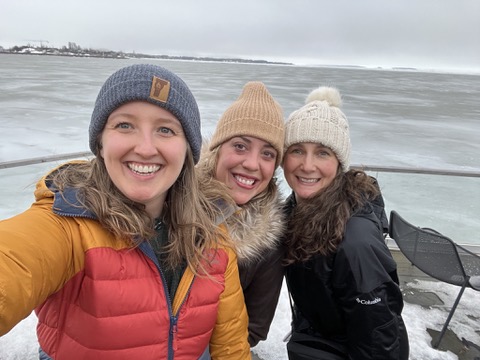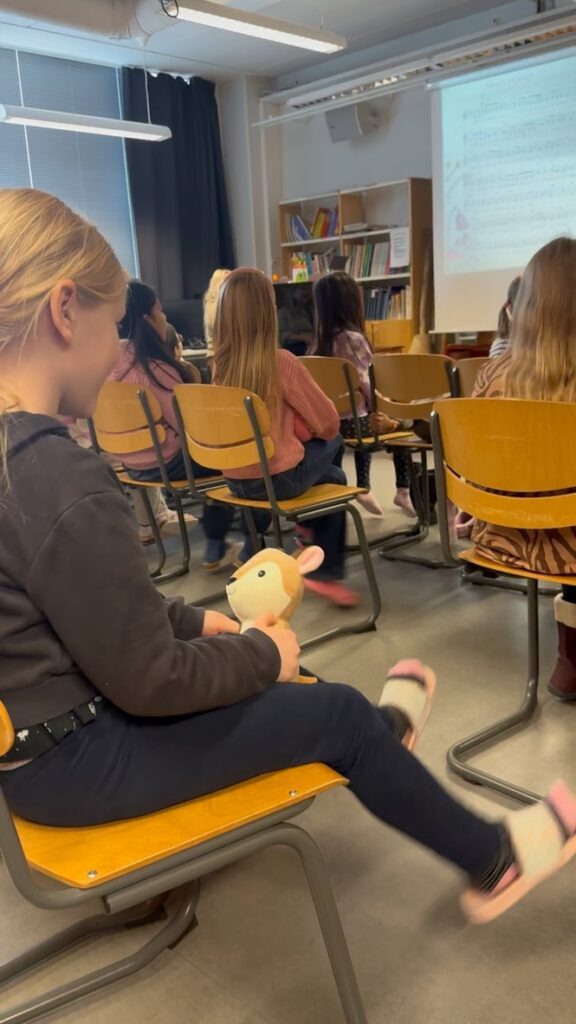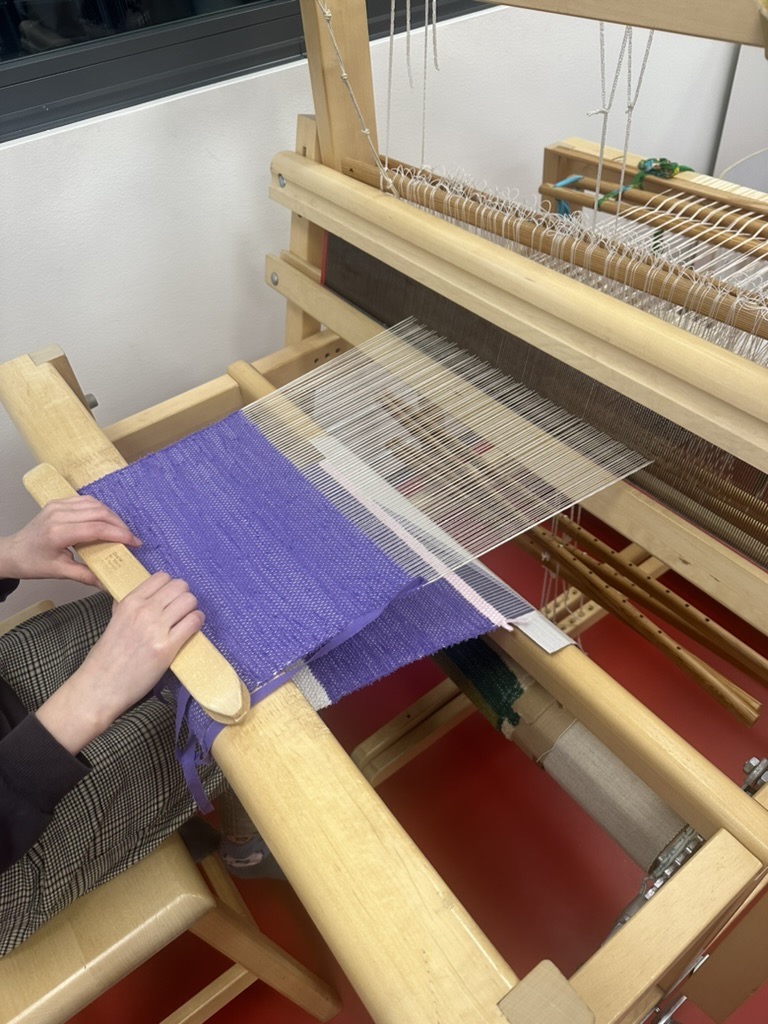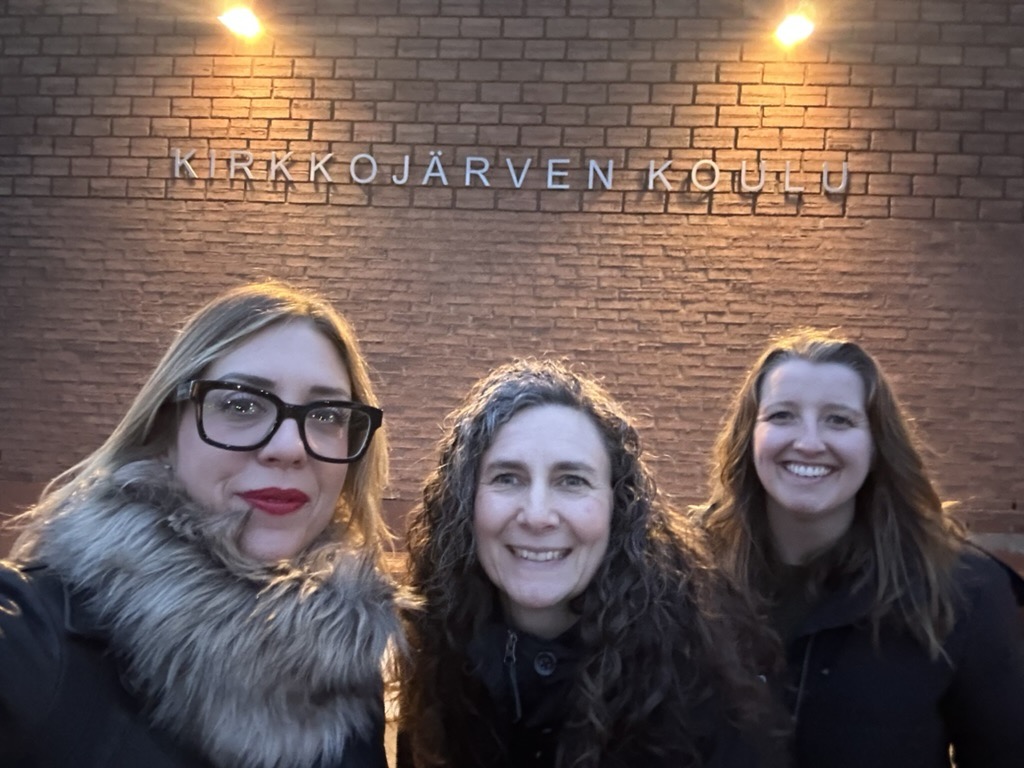
With so many thanks to the Rowland Foundation, I would not have dreamt of the opportunity to head to two of the world’s “happiest” countries and be an observer on the forefront of education. I certainly would not have anticipated that most of the trip to Finland and Denmark would be covered financially and that I would have space and breath with two changemakers to dream and construct a path toward the possible. We visited four schools, one, a kindermusik class (for three year-olds), two primary, and one secondary. What was instantly amazing was the layout. There were foosball tables in the unlocked doorway. There was no front office, no one waiting for us with a badge, a photo, a sign-in. In fact, we wandered around for a good five minutes before we followed the “over the river and through the woods” directions to get to our host teacher’s room. Once there, we noticed all of the children and the teacher were in their stocking feet. (This, we observed in all four schools). As each child came into class, they washed their hands, and settled into their desk pods. They chatted playfully, accustomed to the routine, then sought the correct materials from their desks. Notably, when the teachers began, the students all tracked them with their eyes. I was so impressed with the eye contact that I began looking for it on public transportation, in restaurants, and out on the street. Of course there are cell phones, but most people regard those they are with instead of the tiny screens.
In addition, all students take music; their classrooms are stocked with instruments. They all take crafting classes (we observed students working with looms in their free time…and there was no teacher chaperoning! The students had an open block and they wanted to finish their rugs. We were lucky enough to have lunch with two of the schools. No students bring lunch, they all eat together, alongside their teachers. Lunch is simple (two soups, one vegetarian, one fish chowder, cucumber slices, bread and butter, milk or water). Students serve themselves, go back for seconds, or not, clear their plates, scrape their compost, and seem committed to helping their school reduce biowaste. They all finish at different times, venture out to play when they are ready, and the teachers do not hustle out.


In happy addition, many of the teachers gather in the beautifully appointed lounge on their break to have coffee, tea, a chat…they were not on their phones, nor hustling to photocopy or grade papers…their school day ends at 1:00! Teachers can leave then, or stay and get work done. Most of the students we encountered spoke at least two languages; we were not at an affluent school…Finnish taxes are high to support salaries, health care, and the elderly.
We did observe neuro-divergent students and those for whom education is a struggle. Finland dedicates their best people to the students who need the most help and we watched an assistant (with a Master’s degree) expertly translate for a student who just moved from Japan and intervene when another student began to get agitated. When we asked a smattering of teachers in the lounge if they expel kids, they looked dumbfounded. Initially, the language barrier was such that they thought we were asking if they have students run errands for them.
I know Northfield is moving in the right direction to be attuned to restorative practices, SEL, and experiential learning, but I couldn’t help noticing the trust innate in the interactions among Finnish schools, teachers, and staff. Would it ever be in America’s reach to care for the homeless and elderly, provide health care and food to all citizens, and not worry about guns in schools so that our many of our students do not have to come to school loaded with worries beyond their control? It seems so humane to have this level of unconditional positive regard built into the very fabric of a country’s value system.

Though I have traveled extensively in my lifetime, never have I done it from the lens of “what learning can I bring back to my school?” Having two administrators by my side, the space and place to have rich discussions, and the example of Finnish education at the ready, I am in a place to know the next step. I will be returning back to Northfield after my Rowland leave year. If the stars align, my roles will be cobbled together, part teacher and part restorative practitioner. My administrators and I worked together to create a new teaching model that I hope to pilot. Affectionately, we call them “microclasses,” and each slice will run for nine weeks, or one quarter. It will be mixed grade levels (6-8) and (9-12), and open to anyone who is interested. I will team up with another teacher who has a different skill set. What we know for sure is that it will be project-based and have a deliverable at the end. We got this idea while the three of us traipsed across foreign cities and worked to identify the role we each played in successful arrival. Together, we problem-solved public transportation. The deliverable is that we made the train or we didn’t, we arrived on time or we didn’t, we found a bathroom…or we didn’t. We are all smart and clever problem solvers, but learned how to negotiate ourselves, each other, and our environment, and were motivated to solve the problem ahead of us. We thought about how we solve problems…we google them. Lee Ann mentioned that her teenage daughter assembled a piece of furniture she received for Christmas. She worked with the instruction manual and her friend managed the tools. At the end of three hours, they had a vanity. We stopped counting at five skills they used during this project before having the idea that this is what education in schools can be like. We filled a notebook with all of the ideas and I am excited to begin drafting my first microclass, “Literacy for the Motor-minded…” We are going to begin with new car manuals…
